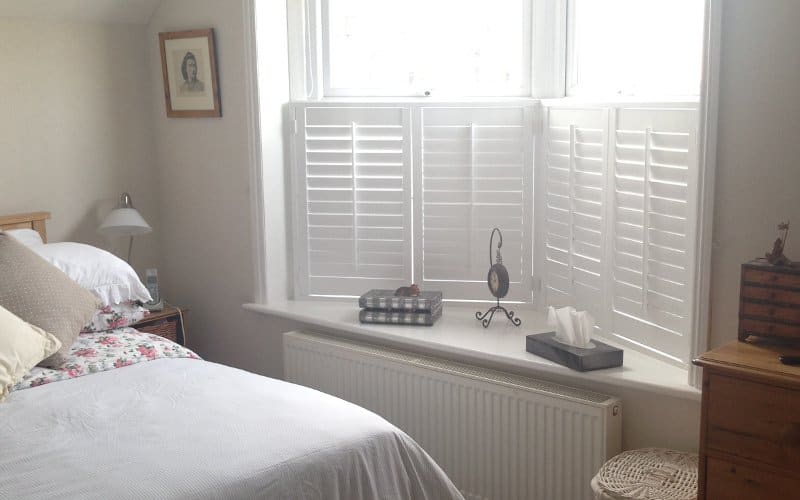Arched windows are among the more common geometric designs seen in home interiors, usually forming a separate panel above larger window or crown doorways as with certain transom windows. Such windows can be fitted with complementary arched shutters which can add an extra degree of interest to this stand-out design feature. Window shutters can be designed to fit many different types of arches, from the individual semi-circles seen atop regular windows to the more complex designs of norman windows.
The louvers can be fitted to create a gorgeous sunburst pattern (with the louvers spreading outward from the centre of the bottom rail) which makes for an eye-catching statement when coupled with some full height shutters. Alternatively, arched shutters can be designed with horizontal louvers that span multiple panels of different shapes – this has the benefit of giving your curved windows a more uniform appearance.
One of the defining aspects of any window shutter is the size of the louvers (the adjustable slats that span across the width of the frame). Whether the louvers are spindly or thick depends on both the shape of the frame and your own personal tastes – rest assured there is a perfect size for all windows. The width of the louvers is one of the more important variants on your shutters, which usually ranges from 47mm to 114mm depending on the manufacturer.
The width you opt for will not only determine the look of your shutters, but also how much light and privacy they offer to your space. As a general rule, intricate windows require smaller louvers while expansive windows (bay windows and french doors) require larger louvers. Aesthetically speaking, smaller louvers suit more traditional interiors replete with plenty of exciting decorative elements, whereas larger louvers suit modern interiors with a minimalist edge (bigger louvers means fewer lines dividing the room).
Shutters can be designed and fitted to suit even the most distinctive shapes in window design. There truly is no shape too outlandish for the versatile designs of window shutters; they can easily accommodate a range of interesting geometric shapes including triangles, circles, hexagons, and trapeziums. Rather than diminishing your privacy and light control by leaving distinctly shaped windows undressed, special shaped shutters give you full control over these features while simultaneously improving the aesthetic of your interior.
For instance, porthole windows often present a problem for blinds and curtains as these dressings do not work with non-rectangular designs. But window shutters can be tailored to circular windows, with louvers shaped to fit the rounded frame like a glove while remaining completely functional. Likewise, since the windows in rooms with sloped roofs (i.e. gable ends) are often triangle or trapezium shaped, they are not compatible with dressings that require level headrails to work. On the other hand, special shaped shutters can fit perfectly into angled window frames while remaining completely functional.
Larger openings can often be difficult to dress effectively without covering the beautiful window design with reams of drapery or dividing the room up with blinds. You can complement the existing design of your french doors and bay windows with some complementary shutters, measured and fitted to your particular requirements. Indeed, shutters are able to highlight the beauty of french doors while still providing adequate light, ventilation, insulation, and privacy. Your shutters can even be crafted in accordance with the specific shape of your french doors, with specially made gaps to ensure they do not cut across the handles.
These larger shutter designs are usually made with full-height panels with large louvers, although some use tier-on-tier shutters or café-style shutters with a mid-rail that separates the doors into two distinct panels. Whichever style you choose, your windows and doors are guaranteed to look special when adorned with bespoke window shutters.



